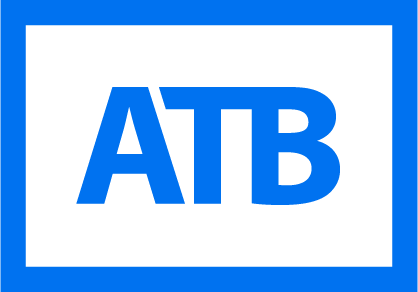Pantayo is a rising Canadian ensemble whose debut album was shortlisted for the 2020 Polaris Prize and performed at this past summer’s festival. In this interview, Eirene Cloma, Kat Estacio and Katrina Estacio spoke about how this quintet creates a new, fresh flavour of kulintang. If you haven't yet heard of gong pop, this chat is your opportunity to expand your musical vocabulary.
THE SOUND OF PANTAYO
Every song is on our albums are different. Our audiences hear a band that can flip through different genres and create songs that take elements from divergent sounds. Pantayo has been labelled as world music, as electronic, as experimental, but we don’t just stick to one sound. We go from R&B to rock, grunge, country … it’s very experimental music.
THE MEANING OF THEIR NAME
In Filipino ways of thinking, Pantayo is the element of considering the community in relation to the person. Our name comes from a concept coined by Zeus a Salazar that resonated with us. When we first got together, we wanted to learn in a communal workshop format. Our creation involves jamming ideas. Workshops are very much about teaching the parts in relation to the ensemble. Pantayo embodies a lot of the things that we stand for.
In Filipino ways of thinking, Pantayo is the element of considering the community in relation to the person.
ABOUT KULINTANG
Kulintang is a form of folk music that originates from indigenous peoples in the Philippines. It’s a set of pot-shaped gongs that resembles a xylophone, with gongs arranged in a row from lowest to highest pitch. They are bright, very loud, and best played in community. Kulintang is really made to be played in outdoor settings, like this festival.
It’s a percussion instrument, loud and rhythmic. We mix in vocals, guitar, synths and drums. The kulintang is something that we treasure, and we’re mindful of how we pack and bring it to different festivals. It's not like there's like a gong repair person around.
We have the privilege of having a second set of kulintang gongs made at the foundry by a person who tunes them. The ones have changed through 10 years of playing. It's interesting to hear the differences between the tunings.
Kulintang is traditionally practiced in a southern part of the Philippines called Mindanao. As diasporic Filipino, music was the most accessible way for us to connect with our culture. At first, it was more about learning about the gongs. It's pretty great to talk about the gongs because it’s one of the ways that we can keep the culture alive. We bring the culture with us through our travels.
That's not to say that this music is not evolving in the communities that it’s from. Our angle is to is bring our diasporic identities into the music that we create - our flavour of kulintang. We were recently part of a festival called Gongster's Paradise, and you could see the diversity of how our contemporaries are applying kulintang music these days. It’s pretty cool.

EVOLVING A TRADITION
Ten years ago, the internet wasn't as connected and we had to get material from teachers. There wasn’t a lot when we combed through #kulintang on social media platforms.
The beautiful thing about a community form of music is that it will find a way to get to, and even evolve, the community. As non-indigenous Filipinos, we’ve asked teachers, community members and other musicians about whether what we’re doing is a disservice or true to the music tradition. Not everyone has the same point of view, but the teachers we approached keen to evolve in a way that feels inspiring and exciting to us.
When we started playing, it felt nerve-wracking but also exciting because we were going into this new territory. Seeing other musicians do their own thing was really affirming. It gave us artistic license to put in our own identities into the flavour of kulintang music, and to have ownership of it.
WHAT EXCITED THEM ABOUT PERFORMING AT FOLKFEST
It’s exciting to see how other musicians interpret folk music - other artists who have the same approach, incorporating culture into their music-making. I'm really excited about the group sessions, where everyone just figures it out. I don't think we've done something like that.
Festivals are a really great way to network and witness artists up close. You see what happens behind the scenes, and pick up on how other people do things.
The beautiful thing about a community form of music is that it will find a way to get to, and even evolve, the community.
FAVOURITE SONGS TO PERFORM RIGHT NOW
I really enjoy playing “Masanguanan,” a track from our new album, whose name loosely means "from the future." Live, we use a kick drum and toms in addition to the gongs, which adds this sense of adventure, and has a video game exploration vibe. (Kat Estacio)
My favourites are still the oldies from our first, 2020, record, especially “Taranta.” Michelle and Kat take turns belting it out on the mic, interspersed with the gong playing kulintang. It has an upbeat vibe and is very percussive and pop punk in nature. (Katrina Estacio)
ON WHAT KEEPS THEM GOING
The energy that comes from playing a set onstage is very different from when we're rehearsing in a studio, or brainstorming songs. Onstage, there's a vulnerability. All eyes and ears are on you. You feed off people’s energy performing in front of a crowd.
The reaction of the audience and whether our songs resonate with them is really important. Making music that the listener will really appreciate and remember and relate to, seeing the reception in radio play and songs being shared on social media - those are the things that keep you going,

“AHA” MOMENTS IN DEVELOPING THEIR MUSICAL STYLE
I can speak to this as the last person to join Pantayo. I watched them a couple of times before joining, and could see so much potential. At a festival in Toronto, Pantayo played one song that eventually evolved to be “Eclipse” on our album. Hearing how the gongs fit in with the ambient sim was an aha moment for me in really seeing possibilities for Pantayo. (Eirene Cloma)
I'm a very visual person, and looking at the sheet music that we studied really helped me. It has different rows that show the numbers of the gongs. If you have two gongs to play, they're stacked one on top of the other. It's like a chart with numbers rolling through and boxed in, depending on the time signature interpretations. My aha moment was realizing that - oh, that's an intro, that's a verse, that's a chorus, and we can chop it up and apply it to however we want in a song. I lovingly call it Frankensteining the music, because there’s parts there that I can repurpose. (Katrina Estacio)
In writing music, we treat the gongs in the same way that a traditional piece might, as sections. We don’t just use them as a percussion instrument, or in a sample manner where we use the tone of each of the gongs. What we found and gravitate towards is creating those clips as if we are our own. It’s about taking ownership and creating our own style.
THE EFFECT THEY HOPE TO HAVE ON THEIR AUDIENCES
Filipinos are one of the largest ethnic groups in Canada, but underrepresented in the music scene. It’s possible to own your culture and have fun with it, too. Obviously there are rules to follow. For example, you’re not meant to play some song types on kulintang in an entertainment setting - they are only meant for rituals or solemn ceremonies. But within the rule set, there’s room to express yourself, enjoy yourself and jam with music.
My hope is us being involved in the Calgary Folk Music Festival ignited racialized folks to have that inspiration - “Hey, I can connect with a group of people from my culture to create music and have fun.”


